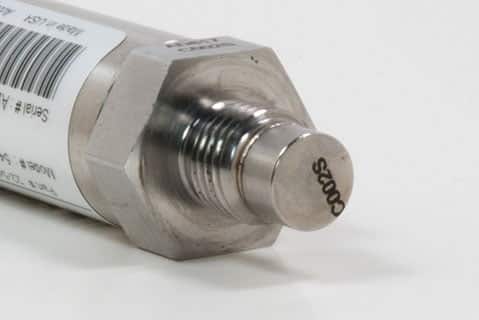 Let’s perform a simple science experiment. Grab an egg and place it the palm of your hand, with the pointed end of the egg directed toward your fingers. Close your hand around the egg and squeeze. If you’re doing it properly, your fingers will be pressing down on the pointed end of the egg, and the rounded end will be settled in your palm.
Let’s perform a simple science experiment. Grab an egg and place it the palm of your hand, with the pointed end of the egg directed toward your fingers. Close your hand around the egg and squeeze. If you’re doing it properly, your fingers will be pressing down on the pointed end of the egg, and the rounded end will be settled in your palm.
You can squeeze as hard as you can and the egg won’t break.
That’s because you’re applying even pressure where the egg is strongest. The eggshell is designed to withstand that kind of abuse. However, if you hit any part of the egg on any surface, it will crack.
A pressure sensor diaphragm is like an eggshell. It can withstand incredible pressure when it is applied evenly across the entire surface. However, putting pressure on a single area or point of the diaphragm will cause problems.
That’s because the diaphragm is very thin – a few thousandths of an inch. It’s actually quite impressive that such a thin sheet of metal can withstand high pressure – tens of thousands of pounds per square inch.
But when an object focuses pressure on a small area or point, the thin diaphragm will be damaged and the sensor may need to be recalibrated or replaced.
With most process connections, we can recess the thin diaphragm to protect it from contact with anything other than the process media. However, flush mount diaphragms remove that protection. Instead, the diaphragm is the flat surface at the end of the sensor, beyond the process threads.
The flush mount exists primarily for two major benefits:
For the right application, these pros outweigh the cons of having an exposed diaphragm that must be handled carefully. You must keep anything from touching the sensor’s diaphragm except for the process media.
The handling of your flush mount pressure transducer is key. Bumps and bruises are not an option.
To help, we put a protective cap over the diaphragm when we ship it to you. The easiest way to keep your flush mount diaphragm safe is to leave the protective cap on until you install the sensor. If you’re going to remove the sensor from the process to put in storage, hang on to the protective cap so you can use it again.
If you misplace the cap, you’ll need to be vigilant and keep the sensor in a safe place until installation. During installation, be sure to thread the sensor carefully to avoid bumping the diaphragm.
Make sure you never tap on the diaphragm. Some feel the need to test the sensor by tapping on or pressing the diaphragm. This test does not verify functionality and will only result in damaging the sensor.
If you end up damaging the sensor, contact your manufacturer (hopefully APG), and discuss what your options are. As long as there are no physical signs of damage (scratches, dents, etc) you may just need a recalibration. However, you’ll likely end up needing either a factory repair or a new sensor altogether.
The installation of any pressure transducer, if torqued too much, can cause a shift in the output. The effect is magnified on a flush mount transducer. To keep this to a minimum, use a torque wrench set to 43 lb-ft. Torqueing the sensor more than this could result sensor damage.
Once you install the sensor, check the reading again and be prepared to adjust the zero to account for any torque shift. Do this before you pressure your line or vessel back up again so you can get an accurate zero. Use the zero pot (potentiometer) screw to adjust the reading until the output is equivalent to zero (4mA on a 4-20mA output, 1V on a 1-5V output, etc).
You might be thinking that these sensors sound like they can’t hack it in the real world. They certainly can and do with regularity. They simply require careful handling and installation. Again, the pros outweigh the cons in the right applications.
It’s simply the nature of exposing the sensing elements of a transducer designed to be responsive to small changes in pressure.
If you have questions about flush mount pressure transducers and whether or not they’re a good fit for your application, contact us. We can help you navigate the nuances of your application and help you choose the best option.